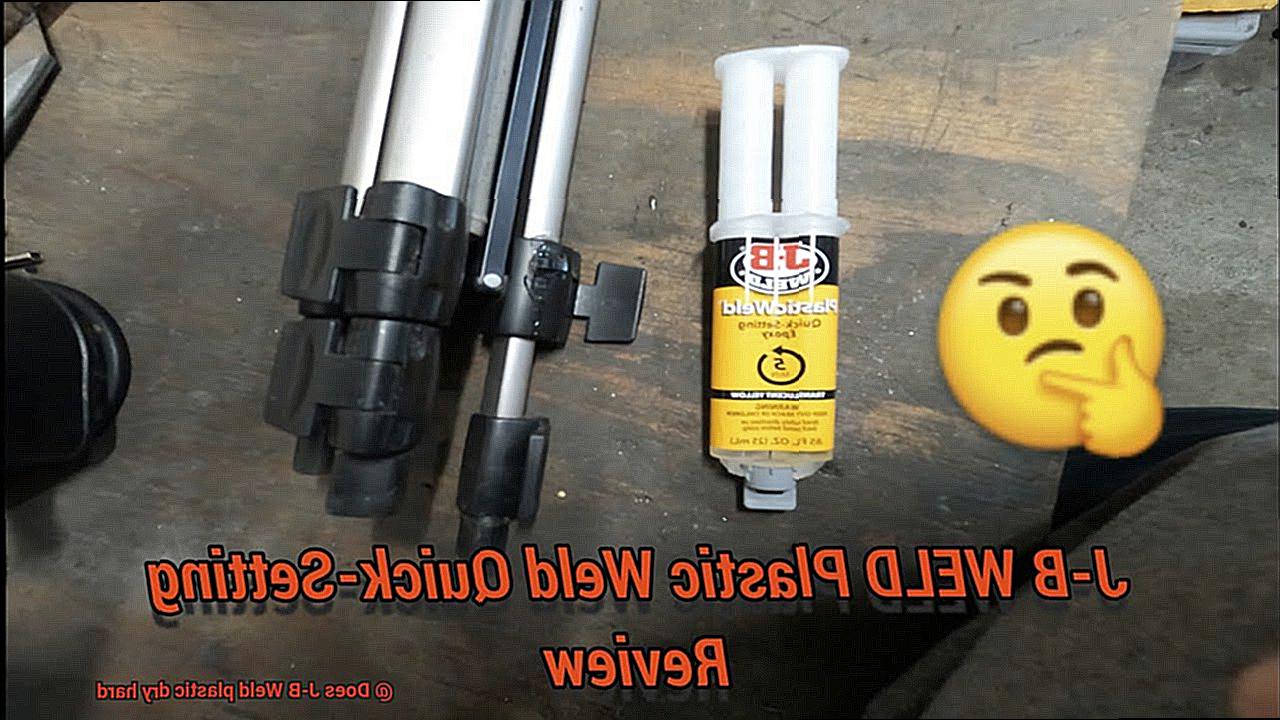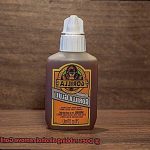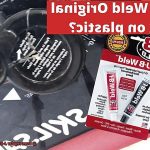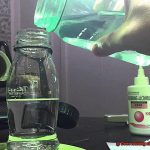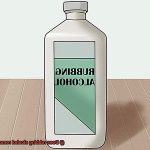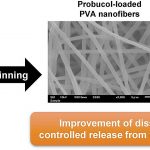Are you tired of constantly replacing broken plastic items in your home or workplace? Do you wish for a quick and reliable solution that can repair them and make them look as good as new? Look no further than the miracle product, J-B Weld Plastic.
J-B Weld is a two-part epoxy adhesive that has gained widespread recognition for its exceptional bonding strength and durability. But, does it dry hard? That’s the question on everyone’s mind, and we’re here to provide you with the answer.
In this blog post, we’ll cover everything there is to know about J-B Weld Plastic – from its drying process to texture and longevity. We’ll also address some common misconceptions and concerns about using this product.
But before we get into the nitty-gritty details, let’s start with an interesting fact that will pique your curiosity. Did you know that J-B Weld Plastic can fix anything from a shattered toy to a cracked bumper? It’s true. This versatile adhesive can bond plastic, wood, metal, and more. So if you’re looking for an easy yet effective solution to your repair woes, keep reading to learn all about J-B Weld Plastic and whether it dries hard or not.
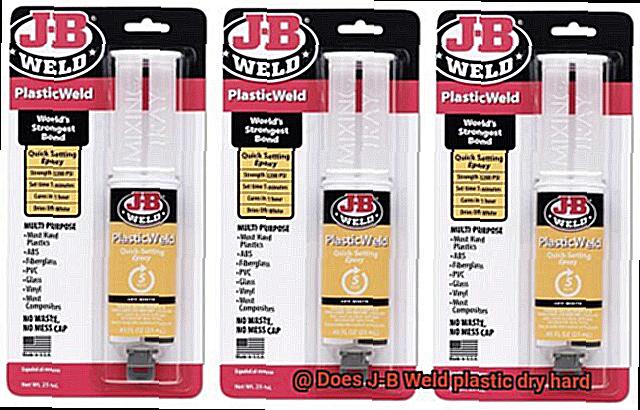
What is J-B Weld?
Contents
- 1 What is J-B Weld?
- 2 Does J-B Weld Plastic Dry Hard?
- 3 Benefits of J-B Weld
- 4 How to Use J-B Weld for the Best Results
- 5 Different Types of Plastics Compatible with J-B Weld
- 6 Resistant Properties of J-B Weld
- 7 How Long Does it Take for J-B Weld to Dry Hard?
- 8 Tips for Applying and Using J-B Weld
- 9 Conclusion
J-B Weld is a two-part epoxy adhesive that has been trusted for over 50 years for its strength and durability.
J-B Weld is made up of two separate components, a hardener and a resin, that must be mixed together in equal parts before application. Once mixed, J-B Weld has a working time of 15-25 minutes and will fully cure in 15-24 hours at room temperature.
One of the benefits of J-B Weld is its versatility on surfaces including metal, wood, plastic, ceramic, and more. It can withstand high temperatures and pressure and is resistant to chemicals, water, and oil. This adhesive comes in several different varieties including Original Cold Weld, KwikWeld, SteelStik, PlasticWeld, and more.
What makes J-B Weld unique is its ability to bond dissimilar materials together with ease. Whether metal to plastic or wood to ceramic, J-B Weld can handle it all. Additionally, it has a high strength-to-weight ratio making it perfect for applications where weight is a concern.
To ensure a strong and permanent bond with J-B Weld, it’s important to follow the instructions carefully. This includes mixing the two parts thoroughly and applying it evenly to both surfaces. Allow enough time for the adhesive to cure fully before using the bonded item.
Does J-B Weld Plastic Dry Hard?
Well, the answer is a resounding YES.
When you apply J-B Weld to a plastic surface, it creates a bond that is not only strong but also durable. The two-part epoxy adhesive fills in any gaps or cracks in the plastic and creates a tight seal that ensures the bond is secure and long-lasting. Once the adhesive has cured, it hardens to form a rigid and sturdy bond that can withstand significant stress and pressure.
However, before you start using J-B Weld on your plastic surfaces, there are some essential things to keep in mind. Firstly, the drying time of J-B Weld can vary depending on several factors such as temperature, humidity, and the thickness of the adhesive layer. Generally, J-B Weld sets within 4-6 hours and fully cures within 15-24 hours. So, it’s crucial to allow the adhesive to cure completely before using the repaired item to ensure maximum strength and durability.
Moreover, J-B Weld comes in different variants for different materials. For plastic surfaces, it is recommended to use J-B Weld PlasticWeld. This variant is specially formulated for bonding plastics and has excellent adhesion to most plastics, including ABS, PVC, and polycarbonate.
Benefits of J-B Weld
As an expert on the topic, let me tell you about the many benefits of this superhero adhesive.
First and foremost, J-B Weld is incredibly versatile. Unlike other adhesives that only work on specific surface types, J-B Weld can bond metal, plastic, wood, ceramic, and more. This versatility means that you don’t need to waste time and money searching for a specific adhesive for each surface type.
Not only is J-B Weld versatile, but it also dries hard and strong. Once cured, the bond it creates is resistant to water, chemicals, and heat. This makes it the ideal choice for automotive repairs, household fixes, and even industrial applications where strength and durability are required. Plus, its ability to withstand high temperatures makes it perfect for engine repairs.
Another great benefit of J-B Weld is how easy it is to use. Simply mix the two tubes together before applying to the surface that needs to be bonded. The mixture has a long working time, allowing for adjustments to be made before it dries. This ease of use makes it a favorite among DIYers and professionals alike.
J-B Weld is also incredibly affordable. Compared to other adhesives on the market, it is often less expensive while still offering superior strength and durability. This affordability makes it an excellent choice for anyone looking for a reliable adhesive without breaking the bank.
How to Use J-B Weld for the Best Results
J-B Weld is a highly reliable adhesive that can be used to bond materials of all kinds, including plastic. If you want to achieve the best results and ensure a strong and durable bond, here are some essential steps to follow.
Clean the surfaces thoroughly
Before applying J-B Weld, it is vital to ensure that the surfaces you plan to bond are completely clean and free of dirt, grease, or other contaminants. Any residue left on the surfaces can weaken the bond. To clean the surfaces, use a degreaser or rubbing alcohol and make sure they are thoroughly dry before applying the J-B Weld.
Mix the J-B Weld properly
To achieve optimal results, use equal parts of both the resin and hardener in the product. Mix the two components together thoroughly for at least two minutes, making sure to scrape the sides and bottom of the container as you mix. Failure to mix properly can cause the J-B Weld to fail.
Apply J-B Weld evenly
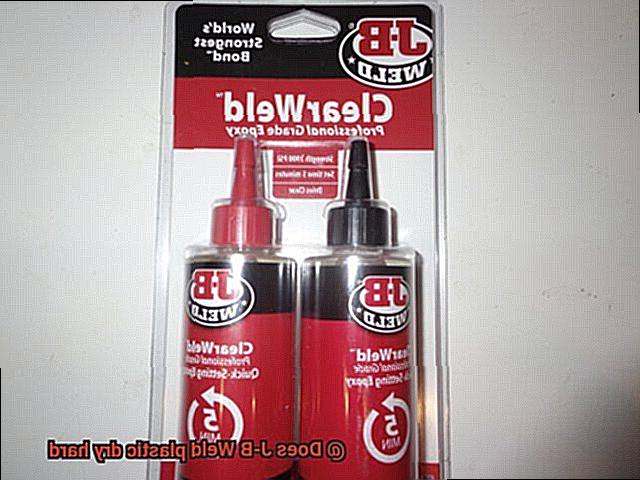
Once you have mixed the J-B Weld, apply it evenly to one of the surfaces you want to bond. Ensure that you apply enough pressure to create good contact between both surfaces. Then, press the two surfaces together firmly and hold them in place for several minutes until the bond sets.
Allow time for curing
J-B Weld takes up to 24 hours to fully cure and reach its maximum strength. During this time, it is best to avoid disturbing the bond or exposing it to any stress or strain. Be sure to read the instructions carefully for specific curing times.
Avoid exposing it to extreme temperatures
While J-B Weld is heat-resistant, it is still important to avoid exposing it to extreme temperatures until it has fully cured. This can cause the bond to weaken or even fail.
Different Types of Plastics Compatible with J-B Weld
When it comes to bonding plastic surfaces with J-B Weld, it’s essential to know which types of plastics are compatible with the adhesive. Here are five subtopics that can help you understand the different types of plastics and how to prepare them for bonding:
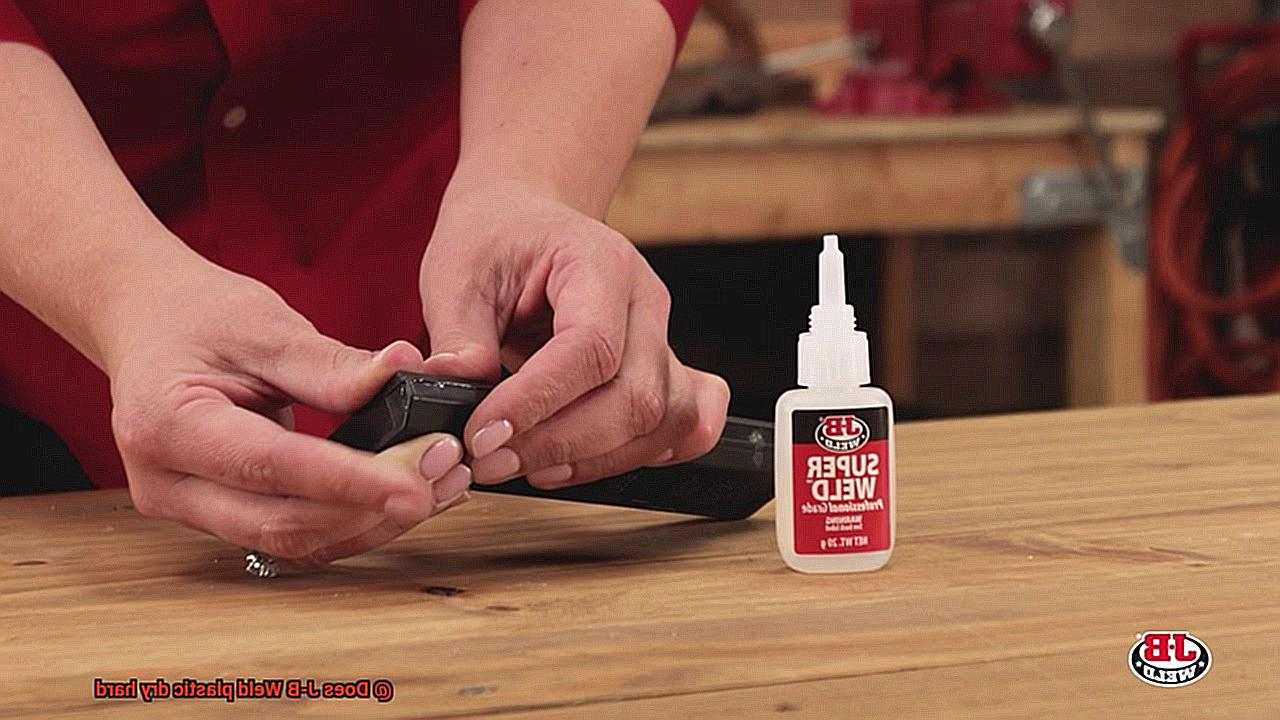
ABS Plastic:
ABS plastic is a popular thermoplastic used in automotive parts, toys, and electronic housings. J-B Weld can easily bond ABS plastics together, creating a robust and durable bond that can withstand high temperatures and pressure.
PVC Plastic:
PVC plastic is commonly used in pipes, fittings, and electrical insulation. It’s crucial to ensure that the surface is clean and free from any oils or contaminants when using J-B Weld on PVC surfaces for optimal bonding. Once properly cleaned, J-B Weld can create a permanent bond that can withstand water and chemicals.
Polycarbonate:
Polycarbonate (PC) is a strong plastic commonly used in safety glasses, medical devices, and electronic components. Bonding polycarbonate with J-B Weld can be challenging due to its smooth surface. To create a texture for better adhesion, it’s recommended to use sandpaper or a roughing tool before applying the adhesive.
Nylon:
Nylon is another type of plastic compatible with J-B Weld, commonly used in clothing, household items, and automotive parts. To bond nylon effectively with J-B Weld, it’s essential to ensure that the surface is clean and dry before applying the adhesive.
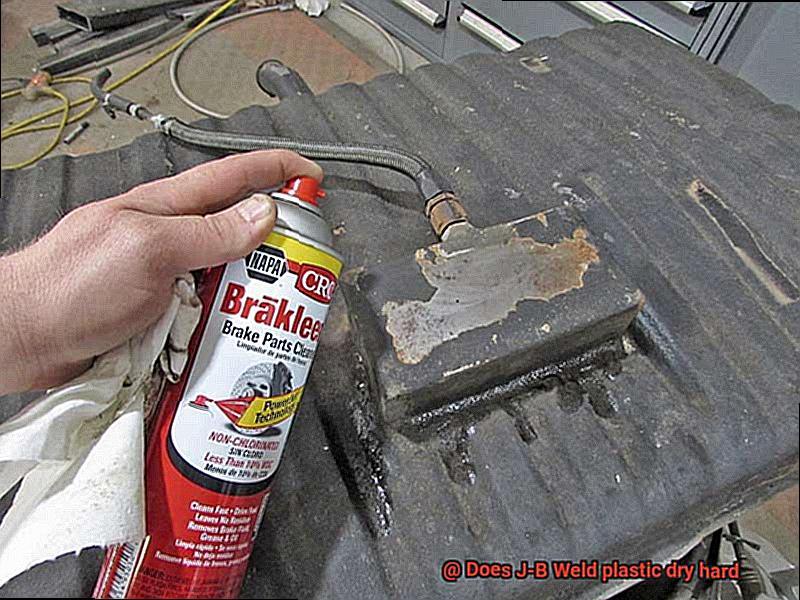
Polyethylene and Polypropylene:
Polyethylene (PE) and polypropylene (PP) are two types of plastics that are typically not compatible with J-B Weld due to their low surface energy. These plastics require special surface preparation techniques such as flame treatment or chemical etching to improve adhesion before applying J-B Weld.
Resistant Properties of J-B Weld
When it comes to bonding and repairing plastic materials, J-B Weld is the ultimate solution. This two-part epoxy boasts impressive resistant properties that make it stand out from other adhesives on the market. If you’re wondering about the resistant properties of J-B Weld, read on.
One of the key features of J-B Weld is its remarkable resistance to various substances, including water, oil, gasoline, and many chemicals. This means that it can withstand exposure to harsh environments without losing its strength or durability. Whether you need to repair automotive parts, plumbing fixtures, or household appliances, J-B Weld is up to the task.
J-B Weld can bond to many types of plastic materials, including ABS, PVC, and polycarbonate. Its high resistance to impact, heat, and pressure makes it suitable for use in a wide range of applications. The hardened epoxy has a tensile strength of up to 3,960 PSI, which means it can handle a significant amount of force without cracking or breaking.
Not only is J-B Weld resistant to substances, but it’s also resistant to temperature changes. It can withstand temperatures ranging from -67°F to 500°F (-55°C to 260°C), making it suitable for use in both cold and hot environments. This means that your repairs will stay strong and durable even in extreme weather conditions.
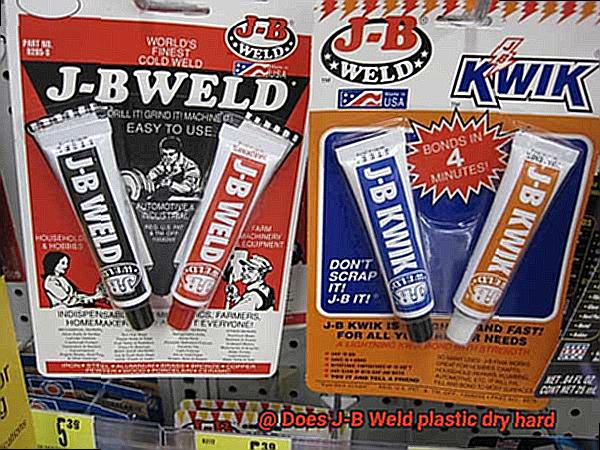
To ensure successful bonding with plastic surfaces, it’s crucial to understand the different types of plastics and how to prepare them properly. While ABS and Nylon are compatible with J-B Weld, PVC requires thorough cleaning, polycarbonate needs roughing, and polyethylene and polypropylene need special surface preparation techniques.
How Long Does it Take for J-B Weld to Dry Hard?
As a J-B Weld expert, I can tell you that the answer is not as simple as you might think.

J-B Weld is a two-part epoxy adhesive that boasts remarkable resistance to water, oil, gasoline, and chemicals. It’s like a superhero force field for your repairs. However, its drying time depends on several factors such as the temperature and humidity in the environment, the amount of adhesive applied, and the type of surface being bonded.
Typically, J-B Weld will begin to set within 4-6 hours after application. But for it to fully cure and dry hard, it may take up to 15-24 hours. Factors such as high humidity, low temperatures, or insufficient application of the adhesive can prolong curing time. To ensure that your J-B Weld repair dries hard and bonds securely, it is crucial to follow the manufacturer’s instructions carefully.
This involves preparing the surfaces to be bonded correctly, mixing the two parts of J-B Weld thoroughly and evenly, and applying the adhesive in a thin layer. You should also provide enough time for the adhesive to cure fully before subjecting it to any stress or strain.
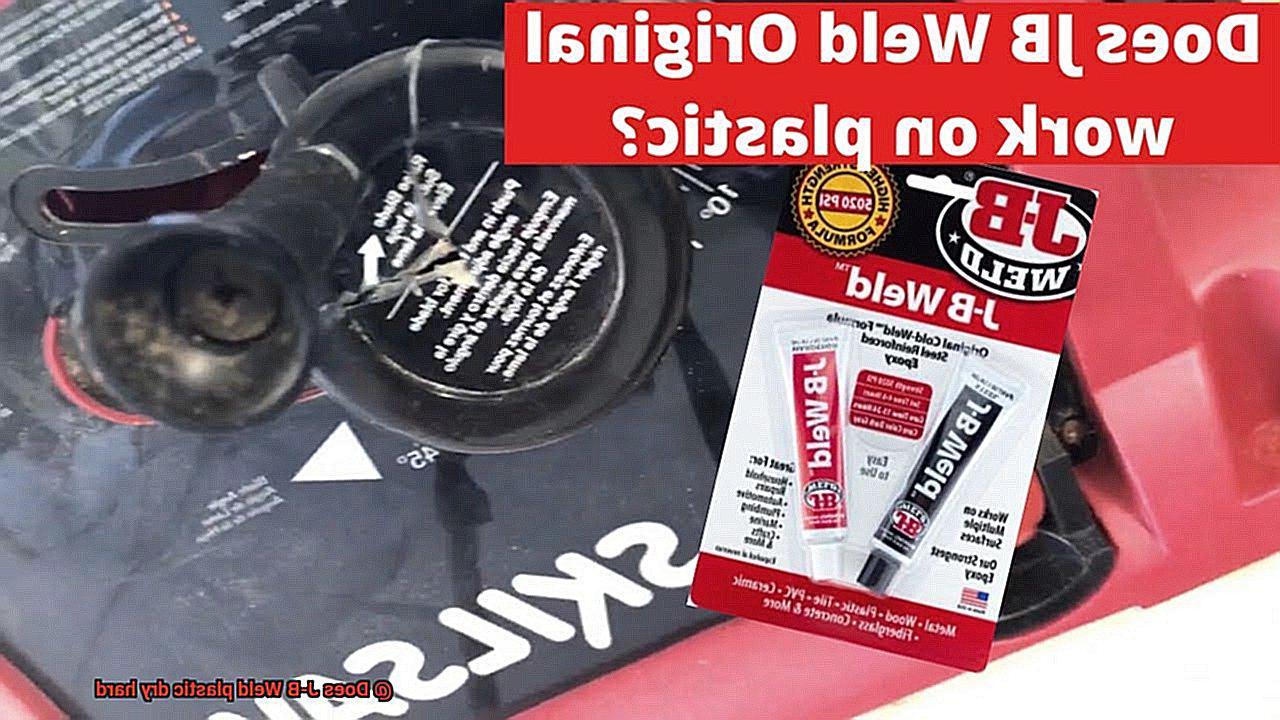
In some cases, you may need to apply additional layers of J-B Weld to fill gaps or cracks in the surface being repaired for a stronger bond. In such situations, it is important to allow each layer of adhesive to dry entirely before applying the next one.
Tips for Applying and Using J-B Weld
J-B Weld is a versatile and powerful adhesive that can be used for all sorts of DIY projects. However, to achieve the best results, it’s important to follow some tips and techniques when applying and using it.
The first tip is to clean and prepare the surfaces you want to bond thoroughly. Any oil, dirt, or debris on the surfaces can weaken the bond, so use a degreaser or rubbing alcohol to clean them properly. Then, roughen up the surface with sandpaper or a wire brush to provide better adhesion.
The second tip is to mix the two parts of J-B Weld thoroughly. The resin and hardener should be mixed in equal parts using a disposable container and stir stick for at least two minutes. This will ensure a strong and durable bond.
The third tip is to apply the adhesive sparingly. J-B Weld is a strong adhesive, so you don’t need to use a lot of it to create a strong bond. Apply a thin layer of adhesive to one surface and then press the two surfaces together firmly.
The fourth tip is to allow enough time for the adhesive to cure fully. J-B Weld takes about 4-6 hours to set and 15-24 hours to fully cure, depending on temperature and humidity. Make sure you don’t disturb the bond during this time.
Finally, once the J-B Weld has cured, you can sand it down to smooth out any rough edges or excess material. You can also paint over it to match the color of the bonded item.
A0BtKeN5YnI” >
Conclusion
To sum up, J-B Weld Plastic is a two-component epoxy adhesive that can bond various materials, including plastic, metal, and wood. Its reputation for exceptional bonding strength and durability is well-deserved. So, does J-B Weld Plastic dry hard? Absolutely. Once applied to a plastic surface, it creates an unyielding bond capable of withstanding significant stress and pressure. However, following the instructions carefully is crucial to ensure maximum strength and longevity.
For bonding plastics, J-B Weld PlasticWeld is the go-to choice due to its excellent adhesion to most plastics like ABS, PVC, and polycarbonate. It’s essential to clean the surfaces thoroughly before applying J-B Weld Plastic and allow enough time for curing.
J-B Weld’s versatility, affordability compared to other adhesives on the market while still offering superior strength and durability make it an indispensable tool in various applications such as automotive repairs, household fixes, and even industrial applications where strength and durability are paramount.
To achieve optimal results with J-B Weld Plastic, follow these tips: clean the surfaces thoroughly before bonding; mix the two parts of J-B Weld evenly in equal parts using a disposable container and stir stick for at least two minutes; apply the adhesive sparingly; allow enough time for curing while avoiding exposing it to extreme temperatures.

